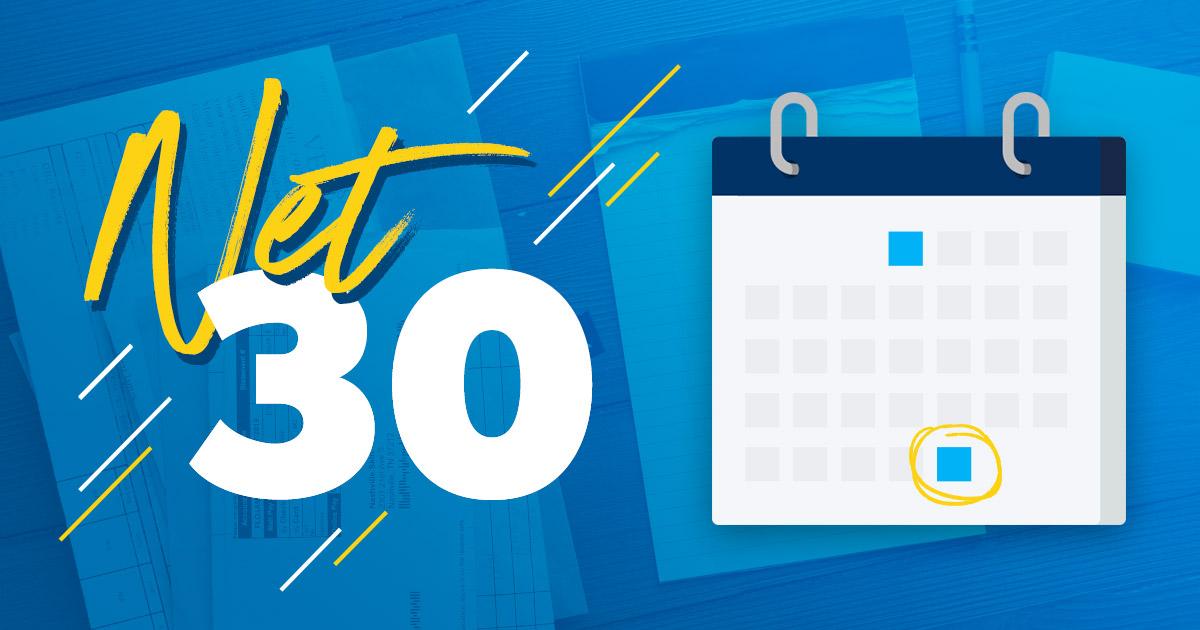Regardless of when the products or services were delivered, a bill marked "Net 30" has 30-day payment conditions. In essence, the 30-day period gives the consumer a type of credit because the goods or services are supplied before payment is due. This includes weekends and bank holidays (non-working days).
Working up your payment conditions is a crucial step that you must take before concluding the agreement, completing the task, and giving the customer an invoice. Net 30 invoice terms are the standard choice for a large number of firms nationwide. But what exactly does net 30 means, how does it operate, and are there any options available that aren't net 30? This detailed handbook has all the information you require.
What is a "net 30"?
The term "net days" is used in payments to indicate when the payment is due, as opposed to the day when the products or services were actually delivered. In other words, the phrase "net 30" on an invoice means that the consumer has up to 30 days (not business days) from the time the invoice is issued to make payment. In essence, you are giving the buyer a type of trade credit.
How does net 30 function?
In your invoice's payment terms, just write "net 30" and you're done. After providing your customer with the agreed-upon items or services, send them the invoice. You should be paid within the agreed-upon 30-day period, but it's important to keep in mind that many small-to-medium businesses (SMBs) deal with late payments on a regular basis.
Net 30 invoices and late payments
There is no guarantee that clients will actually pay within the allotted 30 days, even if your invoices say "Net 30." Due to the fact that Net 30 and other invoices are usually always paid using 'push' payments that give your customer control over your payment procedure, this is the case.
Customers must manually 'push' the payment from their account to yours through push payments. Usually, this takes the form of a physical bank transfer or a card payment made through a link on the invoice. As opposed to this, employing a "pull" payment method, like an automated bank transfer, puts you in charge and guarantees that your invoices are paid within Net 30 or on the due dates you designate.
Net 30 begins when?
Net 30 can refer to 30 days after the sale, 30 days after the delivery, or 30 days after the invoicing. This is entirely dependent upon what you and your client have agreed upon, so it's always a good idea to include this information in the contract to avoid any misunderstandings later.
The meaning of "3/10 net 30"
Net 30 terms on invoices are sometimes combined with a discount. The purpose of this reduction is to motivate clients to make quicker payments. So, if an invoice reads "3/10 net 30," it suggests that clients can save 3% by paying within that time frame. Naturally, additional discounts also fall within this rule, so "2/10 net 30" would be the correct format for a discount of 2% on payments paid within 10 days.
What benefits does having a net 30 have?
Because Net 30 terms are somewhat lenient, you can accept more clients than you would be able to under more restrictive terms. They effectively serve as an added perk to do business with you. It's important to keep in mind that giving your customers trade credit shows that you trust them, and that positive relationships are more likely to result in future sales.
What are the drawbacks of the net 30?
There are drawbacks to using net 30 invoicing terms. First of all, a lot of small firms cannot afford to wait 30 days for payment. Furthermore, some companies abuse net 30 contracts by delivering payments after the due date. Stricter payment terms may be appropriate if this is the situation with your company.
Does my business need to use net 30?
The viability of net 30 terms for your company ultimately depends on cash flow. Extending net 30 invoice terms can be a terrific approach to attract a large number of clients if your company has lots of cash on hand, many clients, and you can handle a few late payments. Offering net 30 terms, however, might not be the best course of action for you if your organization depends on one or two significant clients and doesn't have a particularly strong cash flow.
What options are there to net 30 terms?
You're not required to offer net 30 terms, and many smaller firms decide not to since the wait time for payments is simply too great. Net 7 or net 15 may be preferable if you wish to impose quicker payments. On the other hand, if you're willing to provide your customers longer payment terms, consider extending them to net 60 or net 90 days.
Katheryn is a corporate attorney and finance specialist, conducting research daily to get you closer to financial security and freedom (even if you're just getting started). Her +600 articles published in Collaborative Research Group have already helped thousands of readers on the internet. .
Leave a reply
Your email address will not be published. Required fields are marked *Recent post

What is Net 30 Days Payment Terms
